HMA laminate/adhesive for silicone
Binding low surface energy silicone to various dissimilar surfaces using HMA Interlayer Adhesive
What’s Compo-SiL® Technology?
A GS owned patented technology that can bind silicone surface with an ultra-thin film in a Roll-to-Roll process which drastically enhances its surface properties solving silicone adhesion and bonding issues.
What is HMA?
High bond strength, low application costs and processing safety adhesives for simplified processing & streamlined manufacturing.
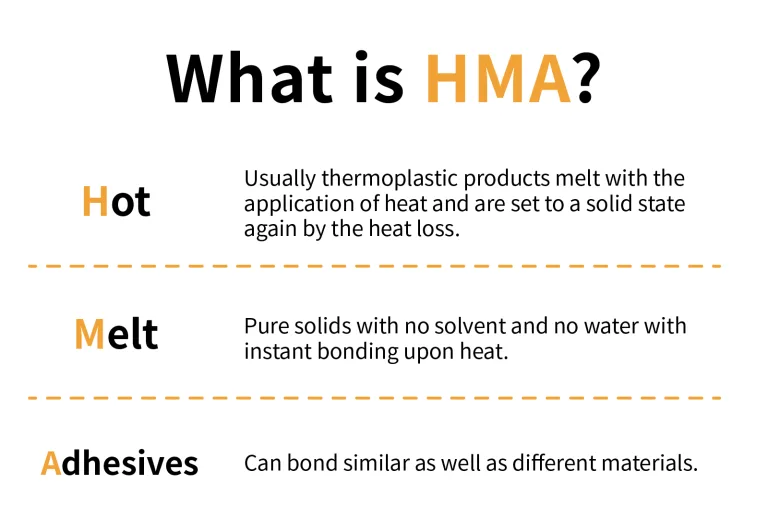
Hot
Usually thermoplastic products melt with the application of heat and are set to a solid state again by the heat loss.
Melt
Pure solids with no solvent and no water with instant bonding upon heat.
Adhesives
Can bond similar as well as different materials.
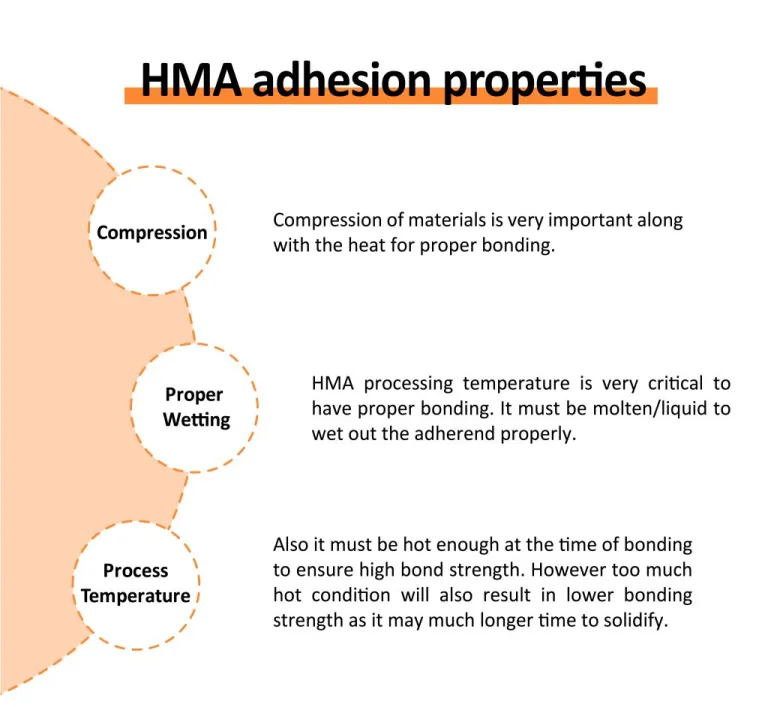
HMA Adhesion Properties
Compression
Compression and heat are both essential for proper bonding of materials.
Proper Wetting
HMA processing temperature is very critical for proper bonding. It must be molten or liquid to wet out the adhesive properly.
Process Temperature
It must be hot enough at the time of bonding to ensure high bond strength. However, excessive heat can also result in lower bonding strength, as it may take longer to solidify.
About Compo-SiL® Technology
General Silicones’ Compo-SiL® can provide the easiest, R2R process with CURED silicone adhesion and bonding wherever HMA can be implemented along with the need of Silicone surface.
Achieving “adhesion for silicone rubber” with HMA is difficult due to silicone’s low surface energy. Allowing HMA to act as an interlayer adhesive, the Compo-SiL® silicone rubber offers a deciding innovation for the HMA industry. HMA users can now take advantage not only two bind two dissimilar and lower surface energy material (silicone) but also getting various benefits that silicone rubber provides.
The ultra-thin modified layer allows the HMA interlayer adhesive to adhere/bond to the Compo-SiL® silicone rubber sheet if given proper process parameters. Heat and Pressure in adequate amounts is necessary for strong adhesion and bonding. With the application of heat the HMA melts and adheres to the surfaces properly when it is compressed. Solidification of the HMA interlayer adhesive depends on the amount of heat provided, thus it should be adequate so as to incur proper and faster solidification.
Internal tests by GS with various HMA showed exceptional adhesion. Excellent HMA bonding strength with Compo-SiL® was demonstrated by reaching either cohesive failure within the silicone layer of Compo-SiL®.
Silicone Bonding to Textile
Compo-SiL® material is one of the best ways for silicone bonding to textile at a much easier using HMA as interlayer adhesive.
Based on the market research, Target group identification and Need-Gap Analysis it is been clear that there is a huge demand of silicone adhesion to textile for various application specific industries like functional decoration, leather, smart wearables and electronics & Interior trim and automotive textiles.
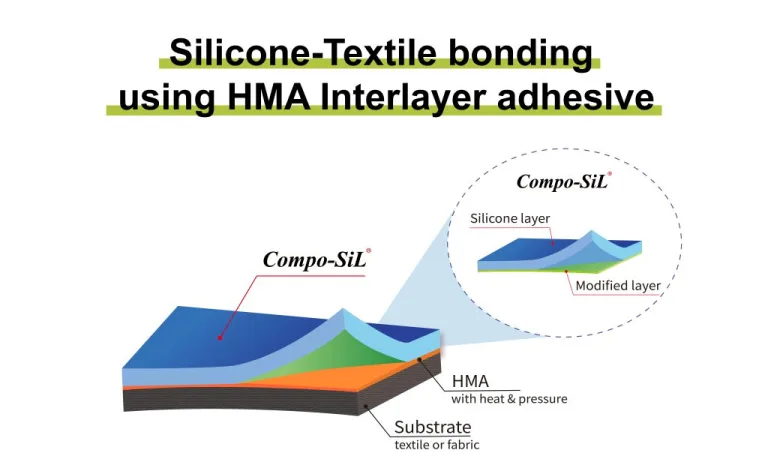
The application of this technology is not limited to the textile industries but it can be utilized in multidisciplinary fields. The interior trim and automotive textile, consumer 3D logo printing, robotics automation safety and flexible electronics industries. are a few examples of trades that can benefit from these characteristics. Additional useful silicone properties are UV stability, usability in high and low temperature, and electric discharge safety.
Suitable applications include:
• Functional Textile Decoration
• Silicone Based Vegan Leather
• Smart & Wearable Electronics
• Interior Trim & Automotive Textiles etc.
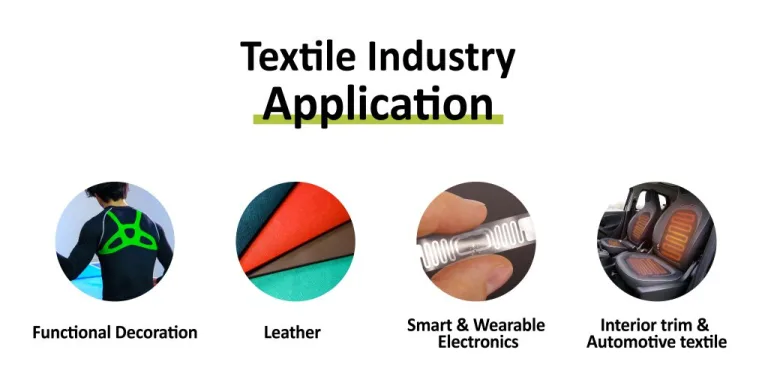
More Diversified Industry Development
Through the Compo-SiL® technology, we have developed many prototypes, such as RFID and heater circuit prototypes on stretchable substrates.
Examples of Prototypes Developed by GS:
• Anti Slip Strips
• Boutique Package
• Encapsulation of Circuits
• Flexible Heaters
• Grating Effect Decorations
• Heat Transfer Decoration
• RFID Circuit
• Watch Strap
• Wound Healing LED Band
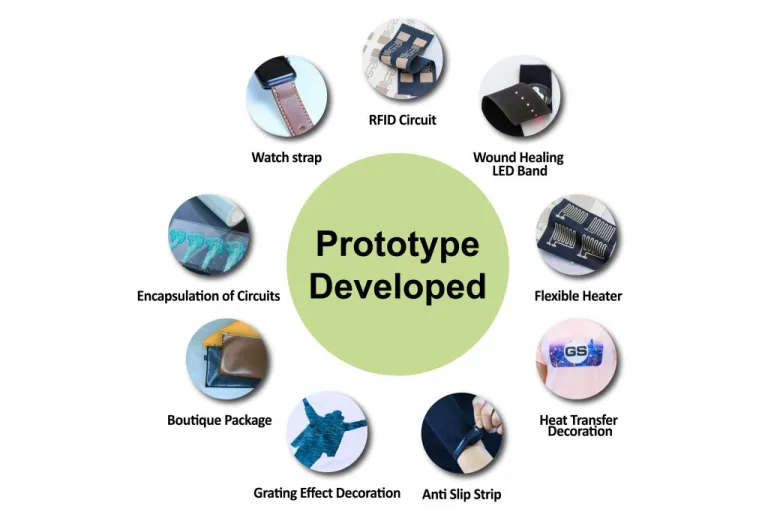
Not only these, various functionalities of silicone will complement to the textiles along with providing a wide range of surface patterns and textures .It proving that the technology is ready for diversified industrial applications.

